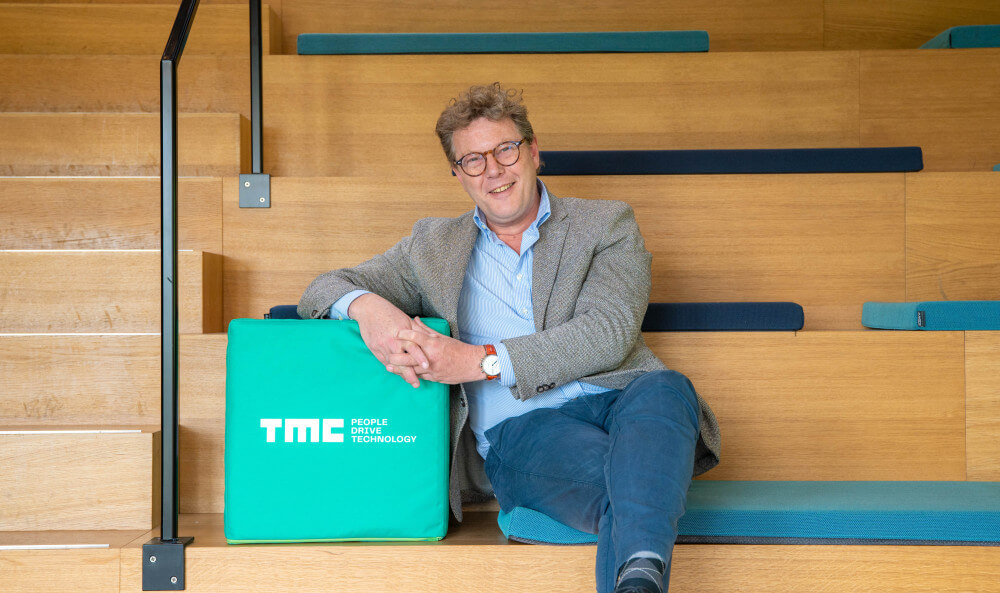![pressrelease_level21[1].png pressrelease_level21[1].png](https://www.themembercompany.com/cache/4462ce0d05b0dcb96e3bd48ef7106e67/pressrelease_level21[1].png)

From waste to railroad ballast and garden tiles: Team CORE unveils new MAGMA installation
Team CORE has the ambition to create circular e-waste streams. With the new MAGMA installation, they are one step closer to the goal. Through the installation they are investigating the feasibility of the technology and the installation to convert dumped waste into basalt products in the future.
Leestijd: min.The installation is a melting oven made using a secret recipe from the blacksmith. As soon as the preheating function of this oven is switched on, the smelter heats up to temperatures of 1400 degrees Celsius. The high temperature allows substances to be modified on a molecular level, making it possible to convert waste streams into basalt. The crux? The mix of different substances in the waste streams. Diversity in minerals, plastics and metals makes it difficult to recycle waste streams. Team CORE and spin-off CORE Chemistry therefore face the challenge of developing models to safely convert these waste streams into a safe product. That they have succeeded is proven by this installation, the last piece of the puzzle that was needed in preparation for scaling up to a factory in Moerdijk.
Two birds with one stone
It cuts both ways when it comes to converting waste streams to basalt. On the one hand, it is a solution for the tsunami of waste that awaits us in the coming years. For now, Team CORE is focusing on fly ash, which is released at incineration plants such as biomass plants and household waste plants. By converting this into basalt, on the other hand, you offer a solution for a polluting industry. For example, ProRail currently uses a linear process for basalt; it is mined, used and then discarded. According to Team CORE's press release, ProRail throws away 300 kilotons of basalt per year. For one ton of basalt, 22.37 kg of CO2 is emitted in its lifetime. 8.83 kg CO2 for mining, transportation and processing, then another 13.54 kg CO2 for disposal. In addition, a Zembla broadcast discussed quartz dust in ballast and the health risks. CORE ballast does not contain this harmful substance. Team CORE therefore offers a suitable solution for several problems that occur in our society.
The history of CORE
The story of Team CORE started ten years ago. When Gabby van Meer, at his employer ProRail, thought that the ballast process could be done differently. He came up with the idea of generating basalt from waste streams. His son, Dirk van Meer, followed in his footsteps and decided to set up the student team Team CORE while studying at Eindhoven University of Technology. In 2019 they had finished the first installation with which they could make basalt, but it did not yet have an option to form basalt into different shapes. With MAGMA, that is possible and therefore the final product is more applicable to the industry.
TMC's pride
As Dirk points out, collaboration in an innovative ecosystem is important for realizing complex new technologies: "The MAGMA project has shown that you need all parties in society to work together to solve sustainability challenges." At TMC, we encourage entrepreneurial thinking among all employeneurs and therefore within TMC's Entrepreneurial Lab there is the possibility to work together with student teams and startups to accelerate developments. The value of the lab according to Dirk: "You have to appeal to the entrepreneur in everyone to take up a challenge and work together. That's also why companies like TMC, which have entrepreneurship in their DNA, are crucial to making these projects succeed." Funding for the installation was provided mostly from ProRail and the Technical University of Eindhoven. Another part of the funding came from two TU/e alumni, Jan van Gemert (former CEO Gemco Casting) and Hans Fischer (former CEO TATA Steel). This project is an example of how different companies work together to improve the world.

Stuur ons een bericht voor mogelijkheden, samenwerkingen of vragen. We komen graag met je in contact!


